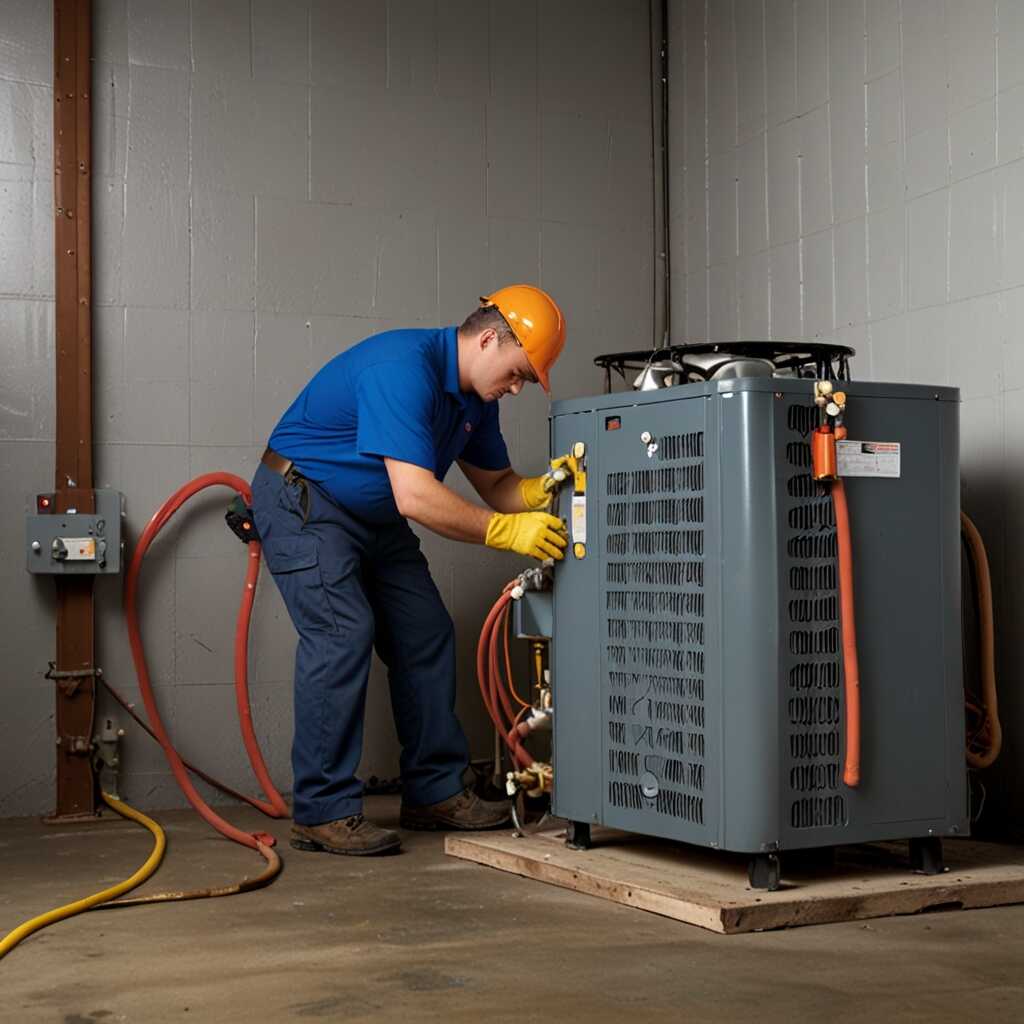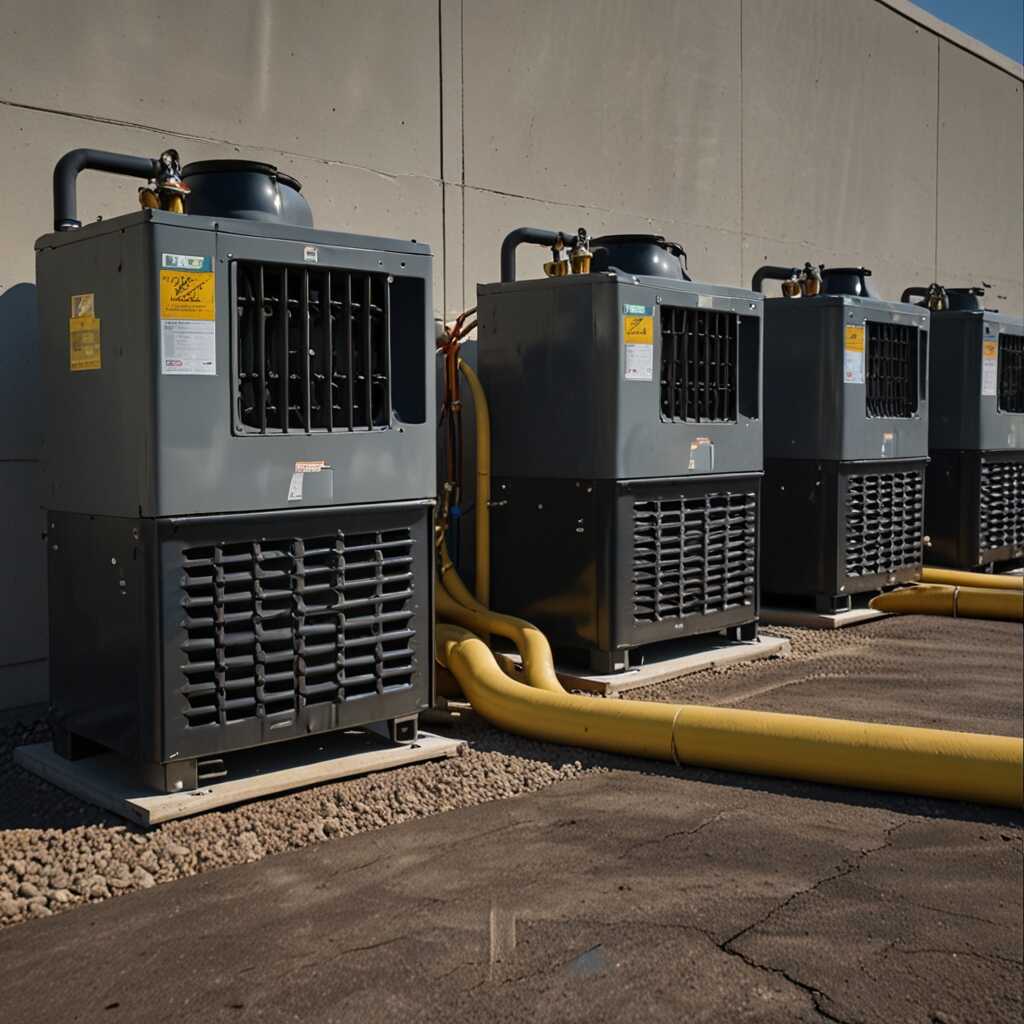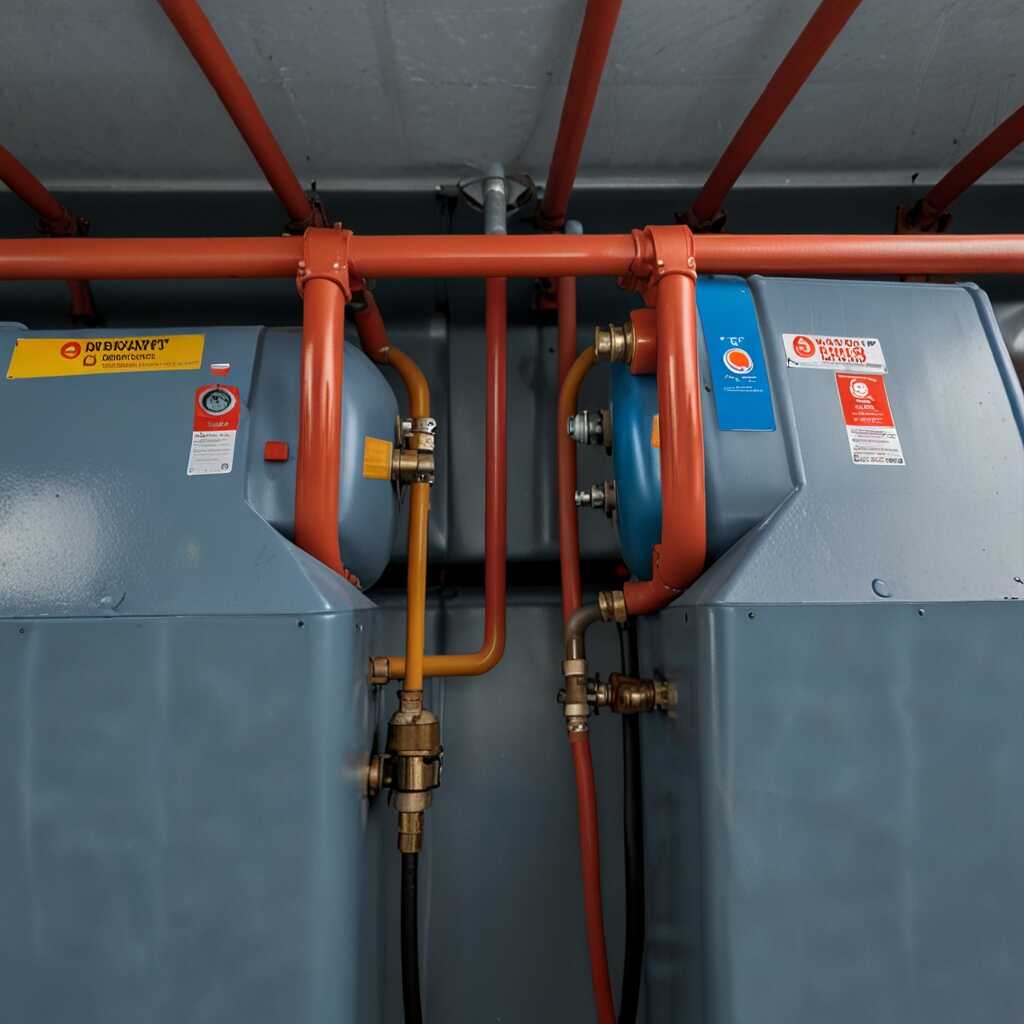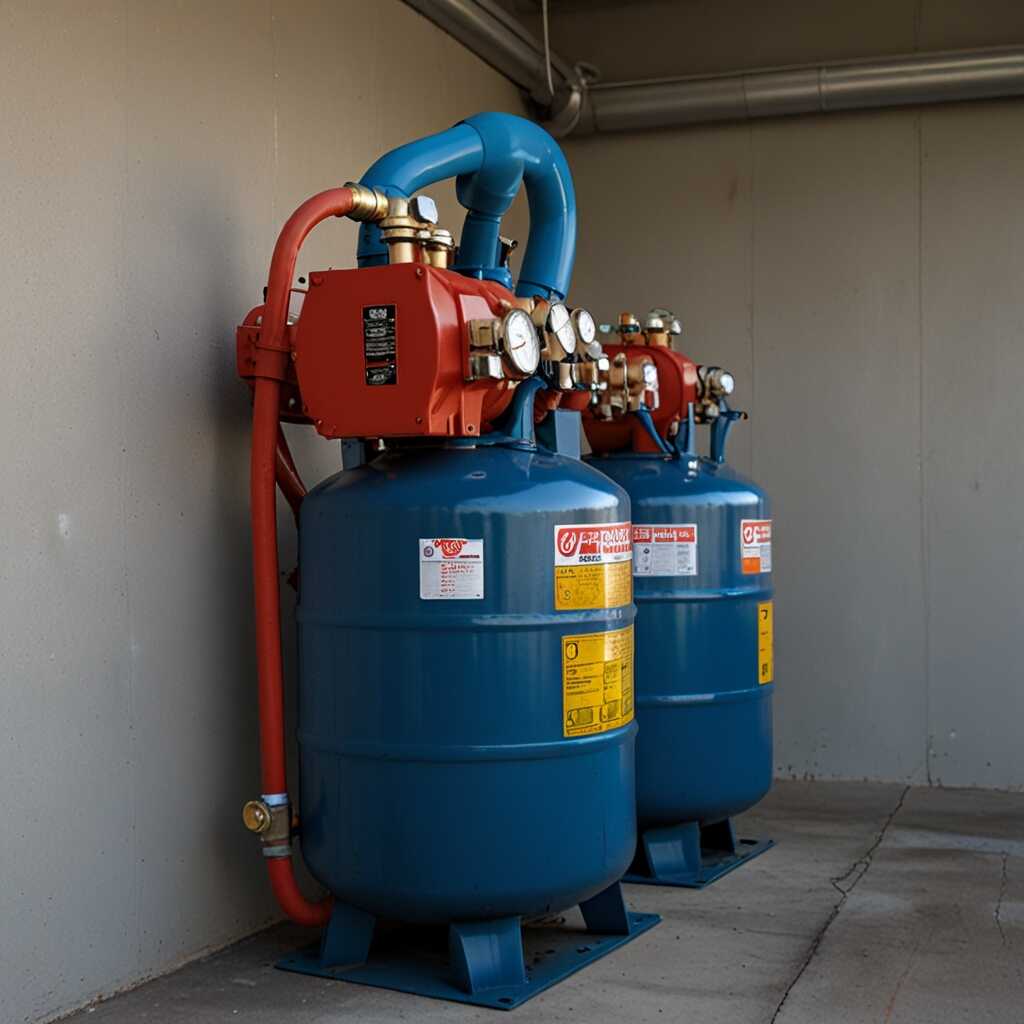Effective maintenance strategies are essential to extend the life of refrigerant recovery machines. Regular care and proper usage can enhance their operational efficiency and reliability. Refrigerant Recovery Pro specializes in providing HVAC professionals with expert guidance on maintaining these vital tools. By following best practices, technicians can ensure their equipment remains in excellent condition for years to come.
Importance of Regular Maintenance for Refrigerant Recovery Machines
Regular maintenance is essential for refrigerant recovery machines to ensure reliability and safety. Proper upkeep enhances performance benefits, such as efficiency and effective refrigerant recovery. Routine checks can identify potential issues before they escalate, preventing costly repairs. Regular maintenance also minimizes safety risks, as malfunctioning equipment can lead to environmental hazards. Following a maintenance schedule, ideally every 6 to 12 months, provides great results, enhancing machine lifespan and operational reliability.
Essential Maintenance Practices for Optimal Performance
Essential maintenance practices include regular filter cleaning, oil changes, and pressure checks. Filters in refrigerant recovery machines prevent contaminants from affecting performance. Cleaning and replacing filters every three months ensures efficient airflow. Regularly changing oil, typically every 500 hours of operation, keeps internal components lubricated and reduces wear. Additionally, conducting pressure tests helps identify leaks and inefficiencies promptly. Following these detailed maintenance practices guarantees that your refrigerant recovery machine operates at peak efficiency, promoting reliable performance over its life span.
Common Problems Encountered with Recovery Machines
Refrigerant recovery machines face several common problems. Users often report issues such as inadequate suction, oil leaks, and faulty gauges. These challenges can hinder equipment reliability. Maintaining refrigerant recovery machines is essential for enhancing their performance. Specific components often requiring attention include filters, compressors, and hoses. Performing regular maintenance helps extend the life of the machine and prevents costly downtime. It is recommended that operators schedule maintenance at least once every six months to ensure the machine can handle ongoing use efficiently.
Essential Maintenance Tips for Refrigerant Recovery Machines
Regular maintenance is crucial for refrigerant recovery machines to ensure optimal performance. Technicians should focus on cleaning or replacing filters that collect debris. Regularly inspect hoses for wear and potential leaks. Testing the gauges for accuracy ensures reliable measurements. Operators should also review the oil levels in the compressor. Ensuring proper lubrication improves the machine’s efficiency. This routine can include checking for any unusual sounds, which could indicate issues requiring immediate attention. Proper maintenance helps increase the longevity and overall reliability of refrigerant recovery machines.

Comprehensive Maintenance Checklist for Technicians
The maintenance checklist for refrigerant recovery machines should include several key components. Start by inspecting the oil levels and ensuring they match manufacturer specifications. Next, check the filters and ensure they are clean or replace them as necessary. Regularly test the machine’s pressure gauges for accuracy. Validate that hoses and fittings are not cracked or leaking. Perform routine electrical component checks. Confirm that safety features are operational. These essential steps enhance the reliability and efficiency of the equipment, ultimately extending its life and improving performance for HVAC professionals.
Recommended Maintenance Practices for Longevity
HVAC technicians recommend implementing a strict maintenance schedule for refrigerant recovery machines to improve longevity. Technicians should conduct a thorough inspection of the equipment every three months. This includes checking for any visible wear and tear, such as frayed wires or worn-out seals. Regular oil changes should be performed based on the manufacturer’s guidelines. Additionally, running performance tests helps identify any issues early. Keeping a maintenance log provides data on service history. Implementing these practices provides a proactive approach to machine upkeep, ensuring operational efficiency and durability.
Key Numerical Insights for Gear Longevity
- Regular maintenance can increase machine lifespan by up to 20%.
- 1 hour of preventive maintenance can save 10 hours of downtime annually.
- Annual inspections reduce repair costs by approximately 30%.
- 80% of refrigeration issues stem from lack of maintenance.
- Machines that receive consistent care last an average of 15 years.
- Replacing filters every 6 months enhances performance significantly.
- Over 75% of technicians report improved efficiency after routine servicing.

Storage Tips to Preserve Refrigerant Recovery Equipment
Optimal storage conditions for refrigerant recovery machines include a dry, well-ventilated area shielded from direct sunlight. This helps ensure their reliability and extends their lifespan. Proper storage protects refrigerant recovery machines from environmental factors such as moisture, which can lead to corrosion and reduced functionality. For best results, maintain a humidity level below 60% to prevent rust and degradation of components. Regularly checking the conditions of the storage space can significantly improve the longevity and efficiency of the equipment.
Essential Strategies for Long-Term Equipment Preservation
Long-term equipment preservation involves specific strategies that enhance the durability of refrigerant recovery machines. Store machines in their original packaging if possible, as it is designed to protect against dust and physical impacts. Use covers made from breathable materials to prevent moisture buildup. Additionally, conduct routine inspections where you verify that no dust or debris has entered the unit, ensuring all seals are intact. These practices help maintain optimal humidity levels and protect the machine’s performance over time.

Detecting Early Signs of Wear and Tear
Identifying early signs of wear and tear in refrigerant recovery machines is crucial for maintaining operational efficiency. Common indicators include unusual noises during operation, reduced suction performance, and inconsistent pressure readings. Regularly check seals and hoses for leaks, as these can lead to significant performance issues. Operators should also review the refrigerant quality, as contaminated refrigerants can cause excessive wear on components. Performing routine tests increases reliability and helps detect potential issues early, ensuring the machine operates at its best.
Specific Indicators of Equipment Deterioration
Several specific indicators can reveal equipment deterioration in refrigerant recovery machines. Operators should closely monitor pressure gauges for fluctuations outside normal ranges. Abnormal vibrations may signify imbalances or internal damage. Inspect the recovery tank for discoloration or excessive build-up, which indicates inefficiency. Regularly testing compressor performance provides insights into its durability and helps identify emerging problems before they escalate. Comprehensive reviews and comparisons of machine performance over time can reveal trends that suggest the need for proactive maintenance.
Advantages of Consistent Upkeep
- Enhanced safety ensures operators avoid hazardous situations during use.
- Regular maintenance minimizes energy consumption, lowering bills.
- Keeping machines in top shape reduces the risk of breakdowns.
- Effective care increases operational efficiency for high-demand tasks.
- Longer machine life leads to lower overall replacement costs.
- Improved reliability boosts customer trust and satisfaction.
- Timely servicing helps comply with industry regulations and standards.

When to Call in Professional Maintenance Services
Users should seek professional maintenance services for refrigerant recovery machines when they notice inconsistent performance, unusual noises, or coolant leaks. Reliable indicators also include the machine failing to turn on or complete recovery cycles efficiently. Additionally, users must consider consulting experts if they lack the experience or tools to effectively troubleshoot equipment. Professional help can provide essential insights and repairs that can save time and costs associated with significant equipment failures.
Common Problems Requiring Professional Expertise
Common problems requiring professional expertise include significant drops in recovery efficiency or unexpected shutdowns during operation. These issues often stem from faulty components or improper functioning. Experienced technicians can perform a reliable analysis and testing to enhance machine performance. They offer services that include thorough inspections, parts replacement, and equipment validation against manufacturer standards. Regular professional assessments ensure refrigerant recovery machines maintain optimal performance and reliability, especially as regulatory requirements increase.
Compliance and Regulatory Requirements for Maintenance
Key compliance regulations for maintaining refrigerant recovery machines include the requirements outlined in the EPA’s Clean Air Act. HVAC professionals must adhere to safety regulations that ensure proper handling and recovery of refrigerants. Regular maintenance also involves following maintenance standards to keep equipment in optimal condition. These regulations aim to reduce environmental impact while ensuring operational efficiency.
Understanding the EPA’s Clean Air Act Regulations
The EPA’s Clean Air Act mandates specific standards that HVAC professionals must follow regarding refrigerant recovery. Under this act, technicians are required to recover a minimum of 90% of refrigerants from appliances during maintenance or servicing. Compliance helps enhance reliability and ensures that refrigerants are managed properly, reducing harmful emissions. Regular training and updates about these regulations provide HVAC professionals with the knowledge they need to maintain compliance and boost efficiency in their practices.
Notable Brands and Their Uses in Refrigeration
- Brand A excels in performance but has a higher upfront cost.
- Brand B is known for affordability while lacking advanced features.
- Brand C offers durability but needs more frequent servicing for peak effectiveness.
- Operators in commercial settings prefer Brand D for its efficiency and reliability.
- Technicians from various backgrounds often choose Brand E for technical support.
- Students in HVAC often study Brand F due to its user-friendly manuals.
- Maintenance teams recommend Brand G for its comprehensive warranty options.
Emerging Trends in Refrigerant Recovery Technology
Current advancements in refrigerant recovery technology include automated systems, improved sensors, and enhanced filtration methods. Automated systems enable faster recovery processes, increasing reliability and reducing technician workload. Advanced sensors monitor system performance in real-time, ensuring efficiency and helping identify maintenance needs early. These innovations help users establish better maintenance strategies, as they provide data to inform decisions. In the past five years, refrigerant recovery efficiency has improved by over 20%, showcasing the push for higher performance in the industry.
Key Features of Advanced Refrigerant Recovery Machines
Advanced refrigerant recovery machines are designed to incorporate features that enhance performance and efficiency. Many models now include digital readouts for real-time monitoring, automatic shut-off functions to prevent overfilling, and high-efficiency compressors. These features enable machines to recover refrigerants more quickly and safely. Moreover, their portability is a key aspect, allowing HVAC technicians to transport them easily. Users should consider models that offer easy maintenance procedures as this will prolong the equipment’s lifespan and ensure efficient operation. Understanding these features can enhance the effectiveness of refrigerant management practices.